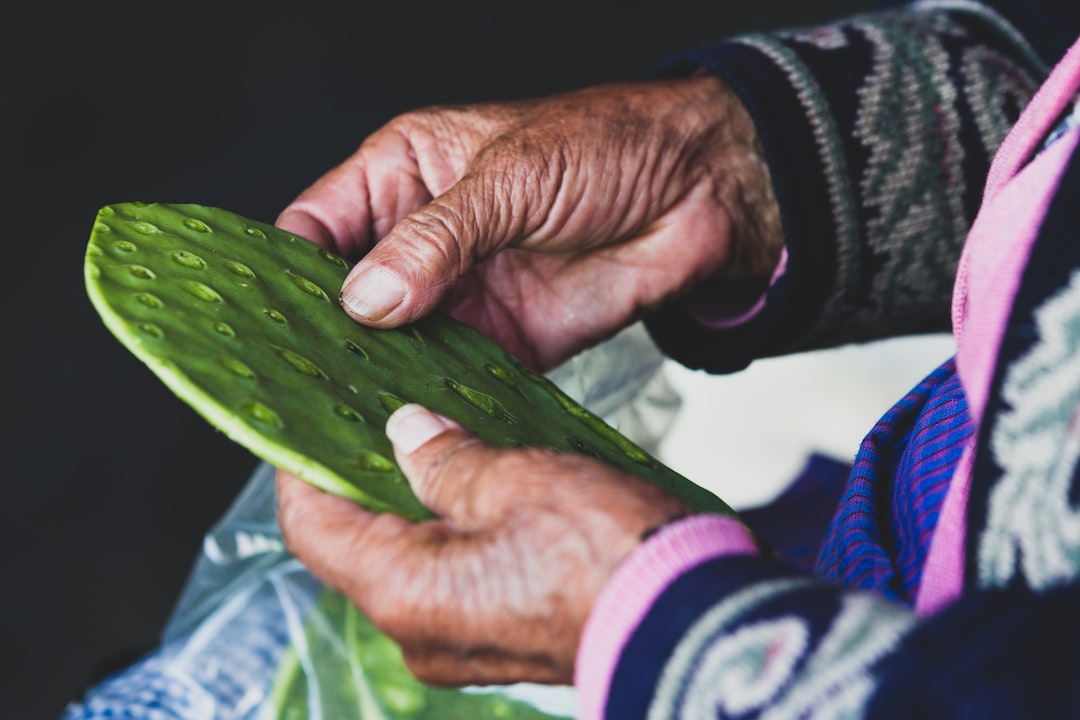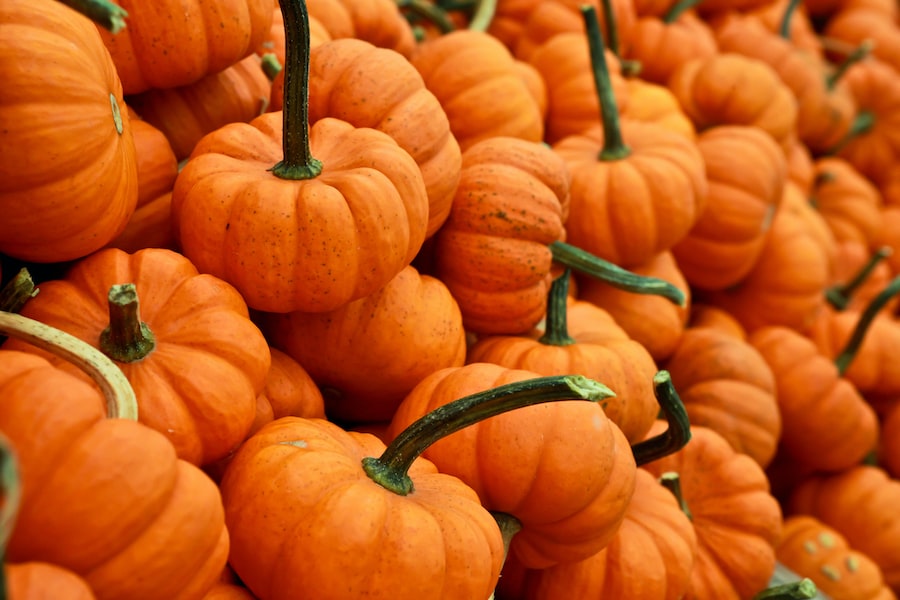Harvesting the Perfect Pumpkin: A Guide to Knowing When Your Pumpkins are Ripe

Pumpkin harvesting is an important process that requires careful attention to ensure the best quality pumpkins for cooking, carving, or decoration. In this post, we will explore the different stages of pumpkin growth and development, as well as the factors that affect pumpkin ripeness. We will also discuss how to identify the perfect pumpkin for your needs and the best time to harvest them. Additionally, we will provide tips on how to check for ripeness in pumpkins and how to harvest them with minimal damage. Finally, we will cover the steps for preparing and storing pumpkins to maximize their shelf life.
Key Takeaways
- Understanding the pumpkin harvesting process is important for getting the best pumpkins.
- Identifying the perfect pumpkin for your needs involves considering size, shape, and color.
- The best time to harvest pumpkins is when the vines start to dry out and the skin is hard.
- Signs your pumpkins are ready for harvest include a dull color, hard skin, and a hollow sound when tapped.
- Checking for ripeness in pumpkins involves looking for a uniform color and a hard stem.
Understanding the Pumpkin Harvesting Process
The pumpkin harvesting process begins with the planting of pumpkin seeds or seedlings. Once planted, pumpkins go through several stages of growth and development. The first stage is germination, where the seed absorbs water and begins to sprout. This is followed by the seedling stage, where the plant develops its first true leaves and starts to grow larger.
As the plant continues to grow, it enters the flowering stage. This is when the plant produces male and female flowers, which are necessary for pollination and fruit development. Bees and other pollinators play a crucial role in transferring pollen from the male flowers to the female flowers.
After successful pollination, the pumpkin starts to develop. It goes through a period of rapid growth, where it increases in size and weight. During this time, it is important to provide adequate water and nutrients to support healthy growth.
Identifying the Perfect Pumpkin for Your Needs
When it comes to choosing the right pumpkin for your needs, there are a few factors to consider. If you plan on using the pumpkin for cooking or baking, you’ll want to choose a variety that has a dense flesh and a sweet flavor. Some popular cooking varieties include Sugar Pie, Cinderella, and Long Island Cheese.
For carving pumpkins, you’ll want to look for a variety that has a thick skin and a large, hollow cavity. This will make it easier to carve and will ensure that the pumpkin holds its shape. Some popular carving varieties include Howden, Connecticut Field, and Jack O’Lantern.
If you’re looking for pumpkins for decoration, you have a wide range of options. There are many different colors, shapes, and sizes to choose from. Some popular decorative varieties include White Ghost, Blue Moon, and Fairytale.
The Best Time to Harvest Pumpkins
| Month | Average Temperature (°F) | Average Rainfall (inches) | Days to Harvest |
|---|---|---|---|
| July | 80 | 3.5 | 90 |
| August | 75 | 4.2 | 75 |
| September | 70 | 3.8 | 60 |
| October | 65 | 3.2 | 45 |
The ideal time to harvest pumpkins depends on their variety and intended use. For cooking pumpkins, it is best to wait until they are fully mature before harvesting. This is when the skin has hardened and the stem has started to dry out. To check for ripeness, gently press your fingernail against the skin. If it doesn’t puncture easily, the pumpkin is ready to be harvested.
For carving pumpkins, it is best to harvest them when they are fully mature but still firm. This will ensure that they are easy to carve and will last longer once carved. To check for ripeness, tap on the pumpkin with your knuckles. If it sounds hollow, it is ready to be harvested.
Signs Your Pumpkins are Ready for Harvest
There are several physical characteristics that indicate a pumpkin is ripe and ready to be harvested. First, the skin should be a deep, consistent color. For orange pumpkins, this means a vibrant orange color with no green patches. For other colored pumpkins, such as white or blue, the skin should be evenly colored without any blemishes.
Second, the stem should be dry and starting to shrivel. This indicates that the pumpkin has detached from the vine and is ready to be harvested. If the stem is still green and pliable, the pumpkin is not yet ripe.
Finally, the pumpkin should feel firm and heavy for its size. If it feels soft or mushy, it may be overripe or starting to rot. It is important to check for signs of disease or damage before harvesting to ensure that you are selecting the best quality pumpkins.
How to Check for Ripeness in Pumpkins

To check for ripeness in pumpkins, there are a few simple steps you can follow. First, gently press your fingernail against the skin of the pumpkin. If it doesn’t puncture easily, the pumpkin is likely ripe. However, if your nail easily goes through the skin, the pumpkin may still be immature.
Next, tap on the pumpkin with your knuckles. If it sounds hollow, it is likely ripe. If it sounds dull or thud-like, it may still be immature.
It is important to avoid damaging the pumpkin during the ripeness check. Use gentle pressure when pressing your fingernail against the skin and tap lightly with your knuckles. Avoid using excessive force, as this can cause bruising or punctures in the pumpkin.
Factors That Affect Pumpkin Ripeness
There are several environmental and cultural factors that can affect pumpkin ripeness. First, temperature plays a crucial role in pumpkin development. Pumpkins prefer warm temperatures between 70-85°F (21-29°C) during the day and cooler temperatures between 50-65°F (10-18°C) at night. Extreme heat or cold can stunt growth and delay ripening.
Second, water is essential for healthy pumpkin growth and ripening. Pumpkins require consistent moisture throughout their growing season. However, overwatering can lead to root rot and other diseases, so it is important to find a balance.
Third, proper soil preparation and fertilization are important for pumpkin ripeness. Pumpkins prefer well-draining soil that is rich in organic matter. Before planting, amend the soil with compost or well-rotted manure to improve fertility and drainage. Additionally, provide regular applications of balanced fertilizer to ensure that the plants have the nutrients they need for healthy growth.
Tips for Harvesting Pumpkins with Minimal Damage
To harvest pumpkins with minimal damage, it is important to use the right tools and techniques. A sharp knife or pruning shears can be used to cut the stem, but be careful not to cut too close to the pumpkin. Leave a few inches of stem attached to the pumpkin to help prevent rotting.
When handling pumpkins, it is important to be gentle and avoid dropping or throwing them. Pumpkins can easily bruise or crack if mishandled, which can lead to rotting or other damage.
It is also a good idea to wear gloves when handling pumpkins, as some varieties have prickly stems or rough skin that can cause irritation.
Preparing Your Pumpkins for Storage
Before storing pumpkins, it is important to clean and prepare them properly. Start by wiping off any dirt or debris from the surface of the pumpkin using a damp cloth or sponge. Be careful not to scrub too hard, as this can damage the skin.
Next, inspect the pumpkin for any signs of disease or damage. If you notice any soft spots, mold, or rotting areas, it is best to remove them before storage. Use a sharp knife to carefully cut away any damaged areas, making sure to remove all affected tissue.
Finally, allow the pumpkin to dry completely before storing. This will help prevent mold and rotting during storage.
How to Store Pumpkins for Maximum Shelf Life
To maximize the shelf life of pumpkins, it is important to store them in the right conditions. Pumpkins prefer cool temperatures between 50-55°F (10-13°C) and humidity levels between 50-70%. Avoid storing pumpkins in direct sunlight or in areas that are too warm, as this can cause them to rot or spoil.
It is also important to store pumpkins in a well-ventilated area to prevent the buildup of moisture. This can be achieved by placing them on a wire rack or elevated surface.
Additionally, it is a good idea to periodically check on your stored pumpkins and remove any that show signs of rotting or spoilage. This will help prevent the spread of disease and ensure that your remaining pumpkins stay fresh.
Harvesting Pumpkins for Cooking and Carving
When it comes to cooking pumpkins, it is best to choose varieties that have a dense flesh and a sweet flavor. Sugar Pie pumpkins are one of the most popular varieties for cooking, as they have a smooth texture and a rich, sweet flavor. Cinderella and Long Island Cheese pumpkins are also great options for cooking, as they have a similar texture and flavor profile.
For carving pumpkins, it is best to choose varieties that have a thick skin and a large, hollow cavity. Howden pumpkins are one of the most popular carving varieties, as they have a classic pumpkin shape and size. Connecticut Field and Jack O’Lantern pumpkins are also great options for carving, as they have a thick skin that is easy to carve.
Proper pumpkin harvesting and storage are essential for ensuring the best quality pumpkins for cooking, carving, or decoration. By understanding the different stages of pumpkin growth and development, as well as the factors that affect pumpkin ripeness, you can make informed decisions when it comes to choosing and harvesting your pumpkins. By following the tips and techniques outlined in this post, you can harvest your pumpkins with minimal damage and store them properly to maximize their shelf life. So go ahead and enjoy the fruits of your labor by creating delicious meals or stunning pumpkin carvings with your freshly harvested pumpkins.



